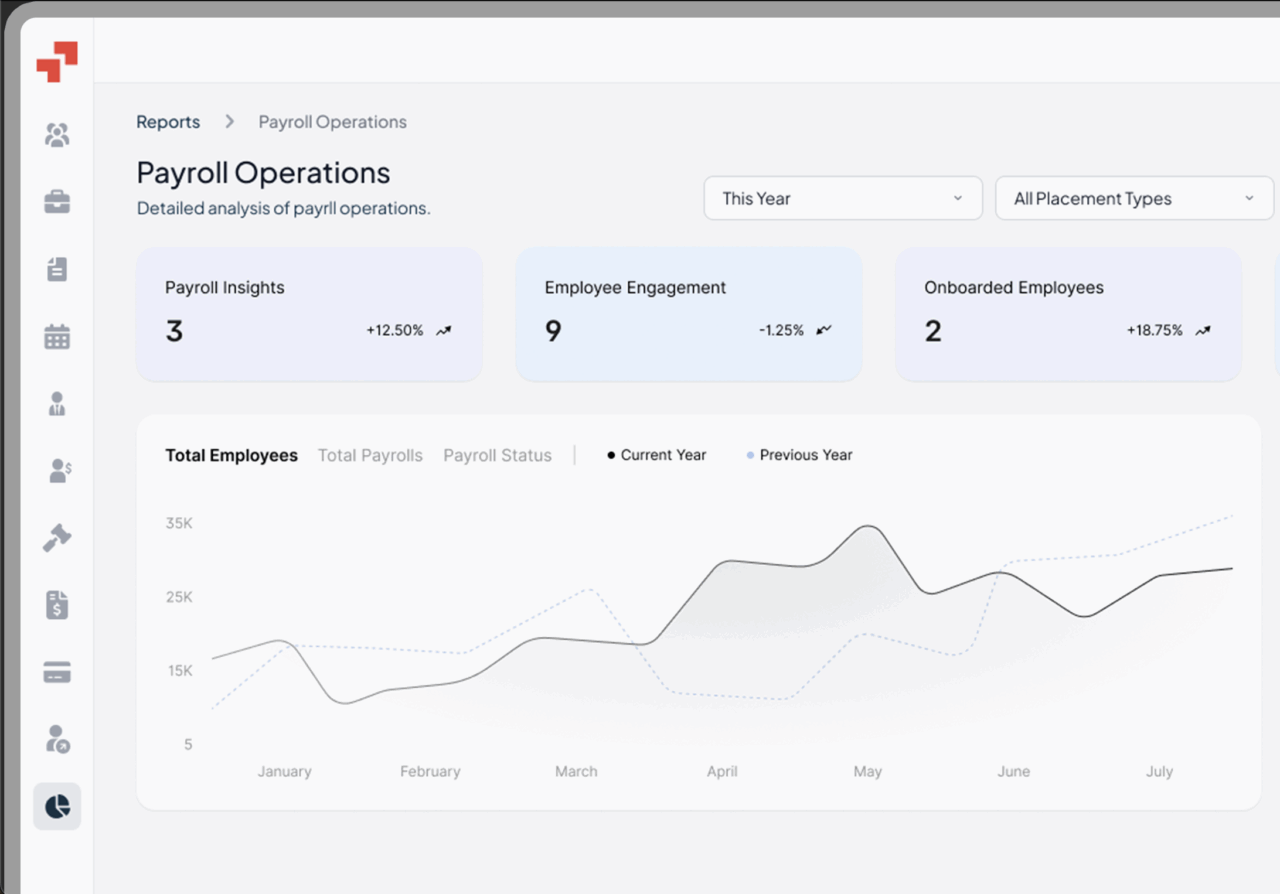Global Workforce GlossaryPay Period
A pay period is the recurring timeframe during which an employee’s work hours are tracked for payroll purposes.
It defines when wages are earned and sets the schedule for compensation, tax withholding, and benefits deductions. Pay periods ensure consistent payroll processing and regulatory compliance, forming the foundation of labor cost management. Understanding local statutory pay period requirements is crucial for avoiding fines and maintaining operational efficiency.
Table of Contents
- What is a Pay Period?
- Common types of pay period
- What is the most common pay period for employees?
- How long is one pay period?
- Pay period vs Pay date
- How to determine a pay period?
- How many pay periods are in 2025?
- How to figure out the pay period?
- What happens if you start in the middle of a pay period?
- How many bi-weekly pay periods are in a year?
- Example Scenario
Common types of pay period
There are several types of pay periods that employers can choose from, and the decision often depends on pay frequency, employee preferences, and business needs.
- Weekly: Employees receive pay every 7 days in a weekly pay period, which is common for hourly workers and hourly employees. This schedule provides frequent payments and frequent pay periods, but increases administrative costs and the number of payroll runs due to more frequent payroll processing.
- Bi-weekly: Employees receive payment every 14 days in a biweekly pay period (bi weekly pay period). A biweekly pay schedule is common, especially for full-time staff, offering 26 paychecks annually. Biweekly pay provides more frequent pay periods than monthly schedules, balancing employee needs and administrative efficiency.
- Semi-monthly: In a semi monthly pay period (semimonthly pay periods), employees receive pay on the same dates each month, such as the 1st and 15th. This pay period type is often preferred for salaried employees, as it helps align with regular financial obligations like rent or mortgage payments and reduces administrative tasks.
- Monthly: Employees receive pay once per month in a monthly pay period (monthly pay schedule, monthly pay periods), typically at the end of the month. This reduces the number of payroll runs and administrative tasks, lowering administrative costs, but may make it harder for employees to budget effectively due to less frequent payments.
What is the most common pay period for employees?
Biweekly pay periods and biweekly schedules are the most prevalent across the U.S., UK, and parts of Europe for full-time employees. The payroll calendar determines the number of pay periods per year, with biweekly schedules typically resulting in 26 paychecks annually and predictable payroll cycles. In contrast, semi-monthly pay is more common for salaried roles due to consistent monthly budgeting. Industry benchmarks and regional norms should guide executives when establishing global payroll practices.
When selecting the best pay period for a company’s pay period, it is important to consider the payroll calendar, annual salary consistency, employee needs, and legal requirements to optimize payroll management.
How long is one pay period?
- Weekly: 7 days
- Bi-weekly: 14 days
- Semi-monthly: Roughly 15–16 days
- Monthly: 28–31 days
Pay period vs Pay date
A pay period is the timeframe during which an employee performs work and earns wages. This period is used to calculate regular pay, tax withholdings, and benefits deductions.
A pay date is the specific day the employee actually receives their paycheck. Employees receive their pay on the scheduled payday, which typically occurs after the pay period ends. Prompt payments on the scheduled payday, often through direct deposit, are important to ensure employees receive their wages on time and to streamline the payroll process.
In short, the difference is simple: the pay period tracks when work is done, while the pay date shows when payment is delivered. Understanding this ensures accurate payroll processing and prevents confusion or compliance issues.
How to determine a pay period?
Companies may implement different pay periods for various employee groups, but must comply with applicable laws when doing so. Executives should determine a pay period by evaluating employee type (hourly vs salaried), the company’s cash flow, labor law requirements, and operational efficiency.
Aligning pay periods with the company’s cash flow is essential to consistently meet payroll obligations and maintain compliance. Consider statutory minimums, industry norms, and tax reporting cycles. Using a payroll service or payroll services can help companies process payroll efficiently and consistently meet payroll obligations.
How many pay periods are in 2025?
The number of pay periods per year is determined by your payroll calendar and chosen pay schedule.
- Weekly: 52 pay periods
- Bi-weekly: 26 pay periods
- Semi-monthly: 24 pay periods
- Monthly: 12 pay periods
The exact number can vary based on start dates. For example, the biweekly payroll calendar can sometimes result in an extra pay period within a year, especially in leap years, leading to either an additional paycheck or smaller checks for salaried employees.
How to figure out the pay period?
Identify the employee’s pay schedule, including when the pay period ends and the corresponding pay dates. Trace the start and end dates of the payroll cycle, and confirm alignment with labor laws and internal policies. Referencing the payroll calendar is essential for effective payroll management and compliance, as it helps track pay periods, pay dates, and any anomalies such as extra pay periods in a year.
What happens if you start in the middle of a pay period?
If an employee starts mid-pay period, wages are prorated to reflect actual hours worked. This ensures fair compensation while maintaining the standard payroll schedule for the company.
Proper documentation and clear communication prevent confusion, enable accurate tax withholding, and ensure compliance with minimum wage regulations. Payroll systems must account for partial periods to avoid underpayment or overpayment.
How many bi-weekly pay periods are in a year?
A biweekly pay period (or bi weekly pay period) typically results in 26 pay periods per year (52 weeks ÷ 2), but the biweekly payroll calendar can occasionally create an extra pay period within a calendar year, leading to 27 biweekly pay periods. This extra pay period may result in either an additional paycheck or smaller paychecks for salaried employees, so companies should plan for these anomalies to ensure annual salary consistency.
Example Scenario
- Company Context: A U.S.-based SaaS company is expanding into the UK and Germany. U.S. payroll is bi-weekly, UK prefers monthly payments for salaried staff, and Germany favors monthly disbursement.
- Payroll Alignment: Executives align UK and Germany payroll to semi-monthly cycles approximating bi-weekly cash flow.
- Mid-Cycle Hiring: An employee starting mid-cycle in Germany on March 10 receives prorated wages for March 1–15, with the next full paycheck on March 31.
- Automation & Accuracy: Payroll automation ensures accurate tax withholdings, social contributions, and detailed pay stubs showing prorated calculations.
- Operational Benefits: Standardizing pay periods across regions reduces compliance risk, minimizes administrative workload, and maintains employee satisfaction.
- Financial Forecasting: Finance leaders can forecast monthly labor costs globally, reconcile budgets efficiently, and prepare accurate quarterly reports, supporting strategic decision-making.
Hire the Best Talent, Anywhere






